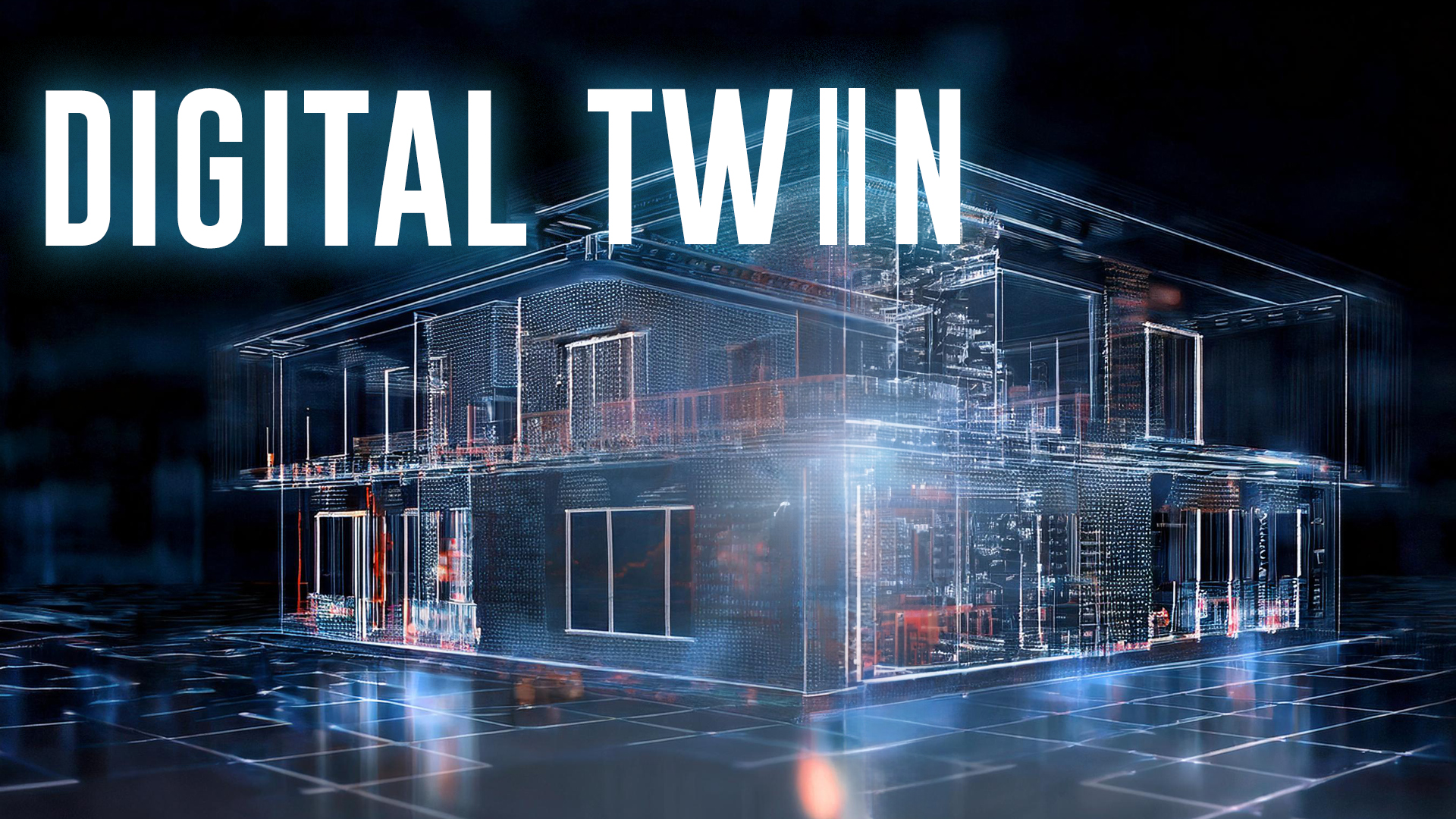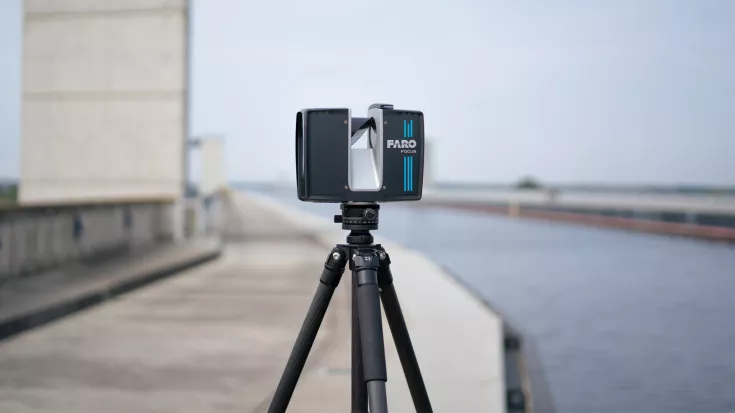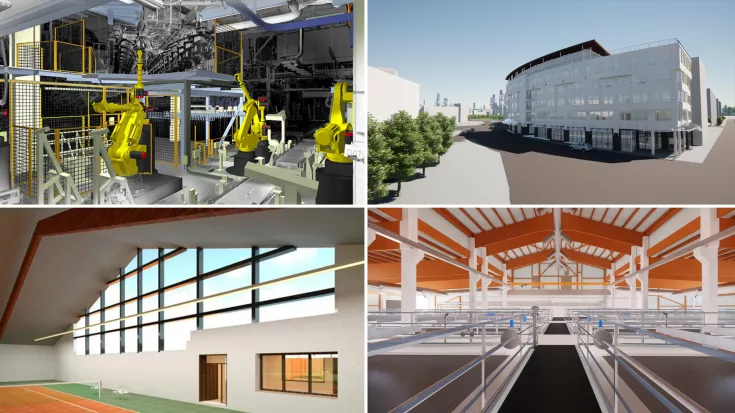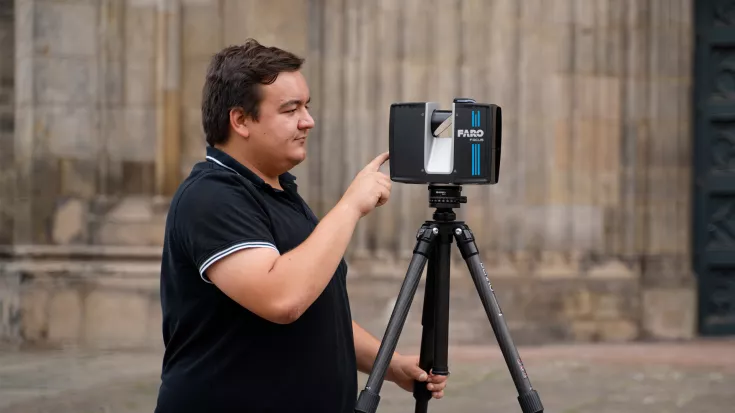Digital Twin

TitleDigital twin: The key to virtually mapping the real world
A Digital Twin is the digital representation of a physical object, system or process. The Digital Twin is revolutionizing how companies virtually map their plants, processes and even entire buildings.
This technology makes it possible to virtually map real objects in order to gain insights into their functionality, condition and optimization possibilities. The integration of real-time data, IoT sensor technology and advanced simulation models creates a digital copy of your real systems. This enables precise analyses, predictive maintenance and optimized decision-making processes.
TitleHow does a Digital Twin work?
The way a Digital Twin works is based on linking real-time data with digital simulation models. IoT sensors continuously record data from the physical object – be it temperature, pressure, movement or other relevant parameters – and transfer it to a digital model. This model depicts the exact structure and behavior of the real system.
With the help of analytical algorithms and simulations, various scenarios can be run through, allowing companies not only to monitor the current status but also to forecast future developments and identify optimization potential.
TitleWhat advantages does the Digital Twin offer?
The implementation of a Digital Twin brings numerous operational benefits:
- Increased efficiency: Precise monitoring and analysis can optimize processes, reduce downtime and deploy resources more efficiently.
- Predictive maintenance: Predictive maintenance is made possible by continuous data collection so that problems can be identified and rectified at an early stage – before costly breakdowns occur.
- Informed decision making: Detailed, real-time data and simulations help managers make better, faster decisions.
- Cost savings: Optimized processes and predictive maintenance reduce operating costs and extend equipment life.
- Innovation potential: Digital Twins open up new business models and enable the integration of innovative technologies into existing systems.
TitleWhere is the Digital Twin used?
Digital Twins are used in numerous industries and offer added value wherever precise real-time data and simulations are required:
Manufacturing industry
Optimization of production processes, monitoring of systems and quality control.
Facility management
Real-time monitoring of buildings and infrastructures to identify maintenance requirements at an early stage and increase energy efficiency.
Power supply
Monitoring of power plants, grids and renewable energy systems to optimize operation and predict maintenance cycles.
Transportation & logistics
Simulation and optimization of supply chains and monitoring of vehicle fleets.
Smart Cities
Integration of digital twins into urban infrastructure to improve traffic flows, energy distribution and public services.
TitleThe role of laser scanners in the creation of digital twins
In order to create a Digital Twin, the precise recording of physical reality is crucial. Laser scanners play a central role here, as they generate three-dimensional point clouds that depict the exact geometry of an object or system. These point clouds form the basis for creating high-precision 3D models.
How does laser scanning work?
A laser scanner works with light pulses (laser beams) that hit the surface of an object and are reflected back. The distance is calculated based on the time the beam needs to travel back and forth. With millions of such measurements per second, a detailed point cloud is created, which is processed in 3D modelling software.
TitleDigitization of existing facilities & objects with laser scanning
Preparation & planning
The areas and objects to be scanned are defined.
The appropriate scanning technology is selected depending on the size and complexity of the system.Data capture
The laser scanner is used on site to scan the surroundings or the object.
Detailed point clouds are created that contain all geometric details.Data processing
The point clouds are imported into software such as FAro Scene, TopoDOT or Autodesk ReCap.
Superfluous data is cleaned up and precise 3D models are created.Integration into the Digital Twin
The 3D models are enriched with additional data (e.g. real-time monitoring, sensors) to complete the Digital Twin.
TitleHow are Digital Twins used?
Digital Twins offer a wide range of possible applications:
Simulation & analysis
Testing and optimizing processes in the virtual environment before changes are implemented in reality.
Simulation of scenarios such as material flows or production capacities.
Predictive maintenance
Real-time data monitoring enables potential problems to be identified before they occur.
Targeted maintenance planning saves time and costs.
Planning & design
Use the Digital Twin to optimize designs, for example in construction or product development.
Collaboration & documentation
The Digital Twin serves as a central platform for teams to work together on projects.
Detailed documentation enables better tracking.
TitleAdvantages of laser scanners in the creation of Digital Twins
Laser scanners offer the following advantages:
- Precision: Capture the smallest details, resulting in accurate 3D models.
- Efficiency: Large areas can be scanned in a short time.
- Flexibility: Laser scanners can be used in various environments, from small rooms to large-scale installations.
- Cost savings: Reduction of errors and rework through accurate data.
TitleWorking with Digital Twins
Digital Twins enable companies in different sectors to work efficiently:
- In production: Optimising production processes and monitoring machines in real time.
- In the construction industry: Planning and monitoring construction projects with high-precision models.
- In logistics: optimising supply chains by simulating transport routes.
- In the energy sector: monitoring and maintenance of infrastructure such as power lines or wind turbines.
TitleBenefit from our experience!
At Laserscanning Europe, we follow the technological and economic developments on the market and can already look back on extensive experience with various laser scanning technologies and a wide variety of projects.
If you need a digital model of existing buildings or products, we can provide you with comprehensive advice and, if required, scan the object for you and create a 3D model.



